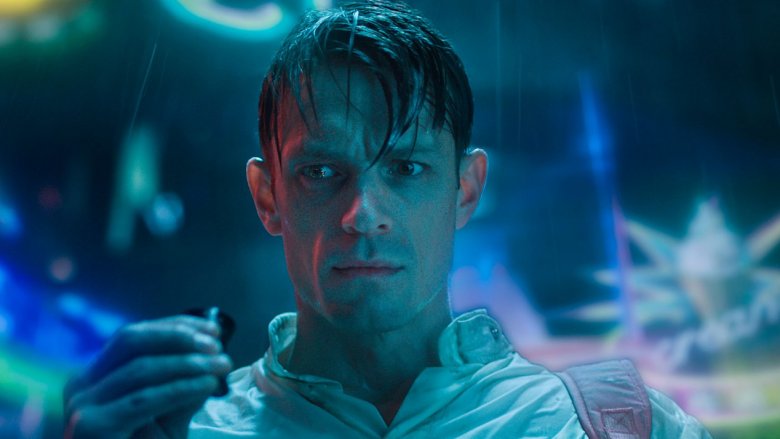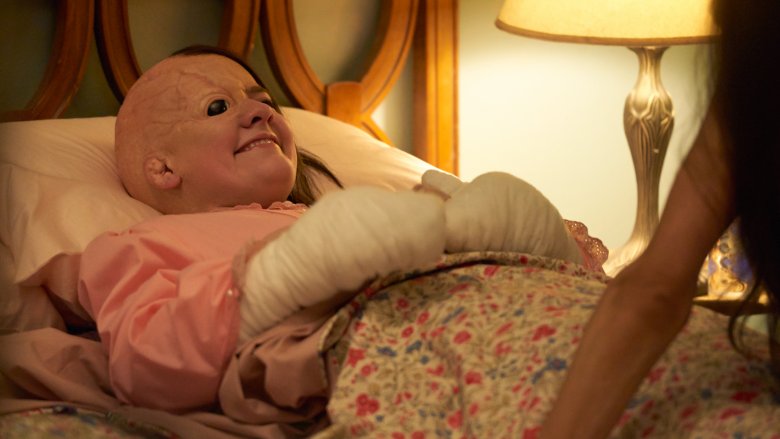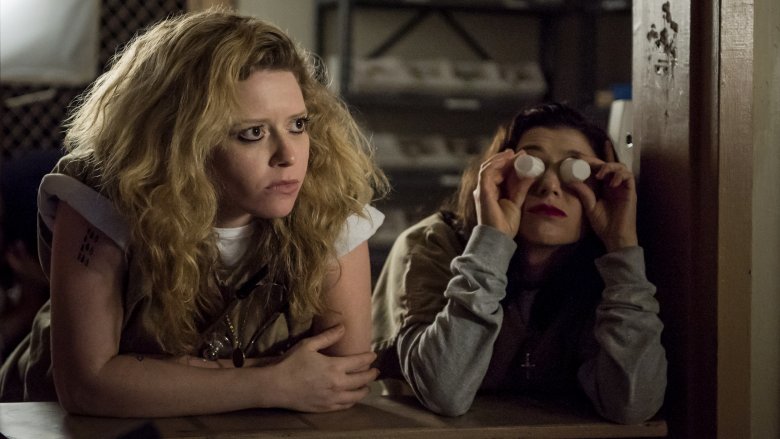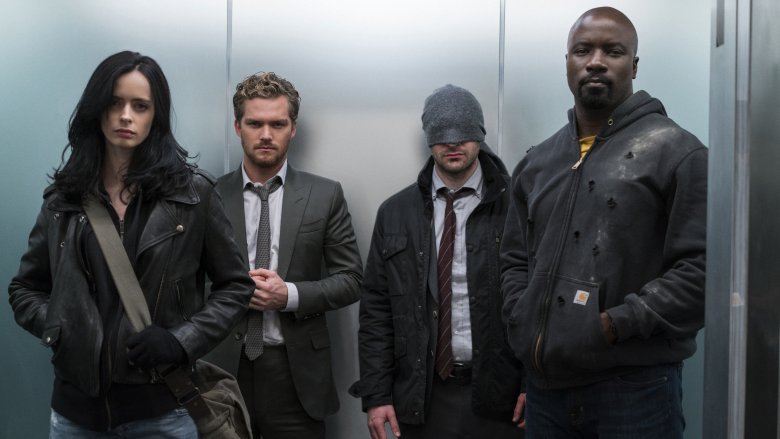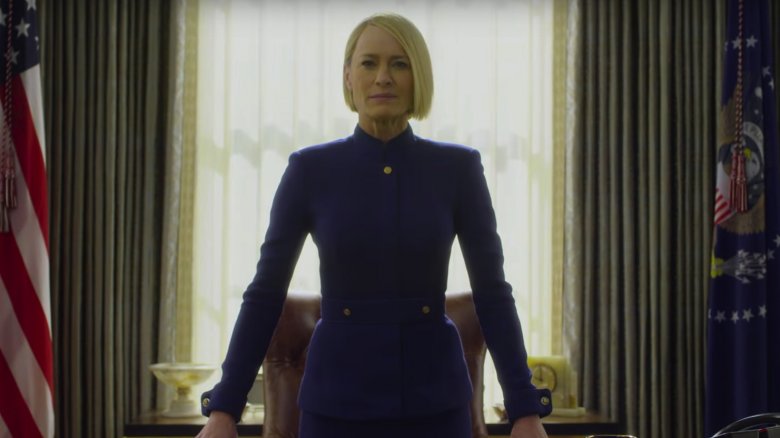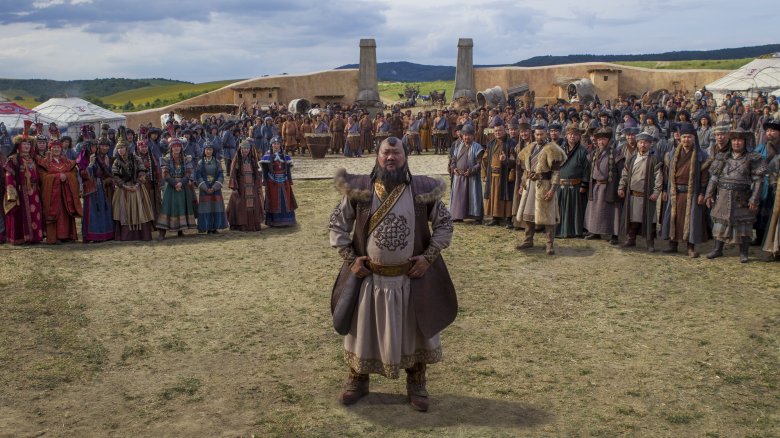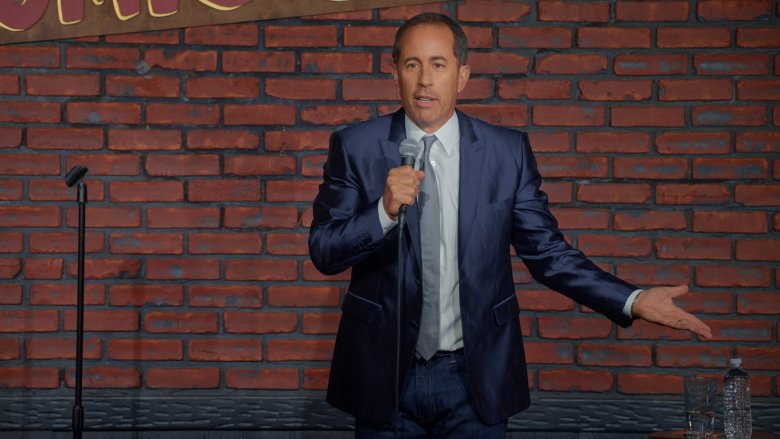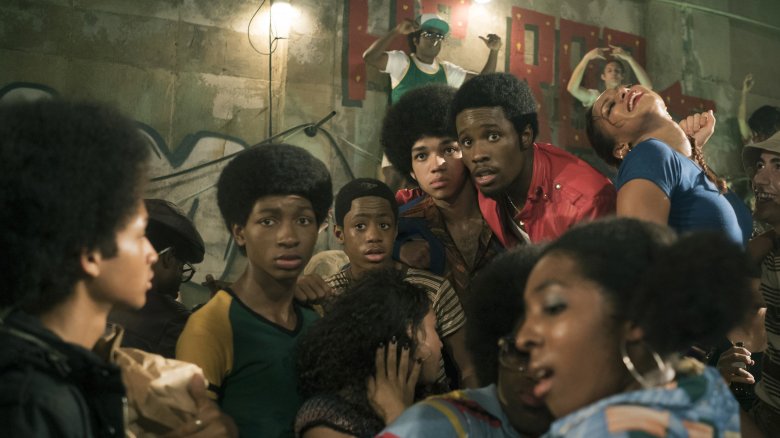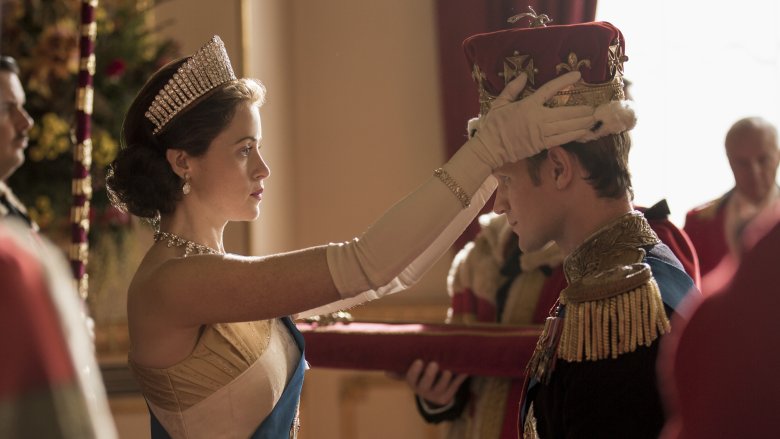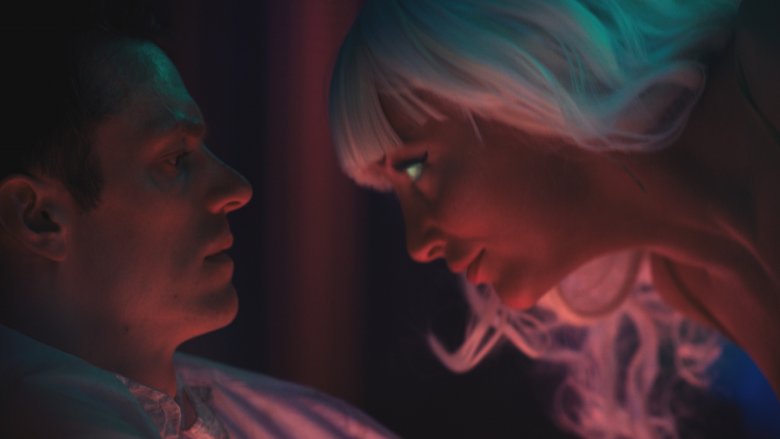Netflix's All-Time Most Expensive Shows
It's no secret that Netflix is a big spender. In 2017 alone, the entertainment company and video-on-demand service spent more on non-sports content than any of its competition in the streaming video space. In fact, it spent more than most traditional TV media companies, dropping $6.3 billion on original and acquired programming. For comparison, Time Warner, Fox, and Disney all spent roughly $8 billion — a number Netflix plans to match in 2018. Netflix's expenditure is also significantly higher than other entertainment giants', dwarfing the video content budgets of Viacom, Amazon, CBS, Apple, and Facebook.
The lion's share of Netflix's budget, of course, goes to original programming — as the streaming service aspires to soon maintain a library of 50 percent in-house content. In order to achieve this goal, the company has signed off on some seriously high-budget series. But which are the most expensive shows Netflix has ever produced? Let's find out.
Hemlock Grove
Produced by horror maestro Eli Roth, American creature-killer series Hemlock Grove was supposed to be a surefire hit for Netflix. Unfortunately, it ended up being little more than expensively average.
At the time of its production, Hemlock Grove ranked among Netflix's most expensive shows to date, but it has since been dwarfed by later projects' production costs. Still, the show reportedly cost $40 million over the span of its first 13 episodes — which is far more than most major television networks are willing to shell out for a 22-episode run.
These days, at over $3 million a pop, Hemlock Grove still ranks among Netflix's most expensive productions. The series received a less less-than-stellar critical reception, though it did manage to garner a dedicated fanbase — which ultimately encouraged the network to sign off on two additional seasons. Roth credited their viewership with that longevity, saying, "We are so grateful to the fans of Hemlock Grove who have championed the series so intensely."
Orange Is the New Black
As one of Netflix's most well-known and widely acclaimed series, it's not surprising that Orange Is the New Black ranks among the streaming service's most expensive offerings. Nevertheless, it's still on the lower end of the high-budget spectrum, since most of the filming takes place in a prison.
Still, the Jenji Kohan-created dark comedy about life in a minimum security women's prison actually costs more than you might think. According to CAA TV literary agent Peter Micelli, Orange Is the New Black runs just under $4 million per episode. "They're huge budgets shows," he noted. "They're doing things in a huge way."
"A huge way" indeed. Investing in the screen rights to Piper Kerman's memoir, Orange Is the New Black: My Year in a Women's Prison, paid massive dividends for Netflix. The series has won more awards than you can scratch on a prison wall, and helped solidify Netflix's popularity domestically and internationally.
The Marvel Defenders Series
Set in the Marvel Cinematic Universe (MCU), the first run of Netflix's continuous superhero shows — Daredevil, Jessica Jones, Iron Fist, Luke Cage, and Defenders — shared one hefty production budget.
According to Variety, Disney spent a massive $200 million over the span of three years for the slew of Netflix series. The deal marked the largest TV or film production commitment in New York State's history, with Disney chief Bob Iger going on record to state, "To us, it's very, very important for us to be in New York."
It was very important for New York as well. The Empire State offered Disney tax credits worth approximately $4 million for the Marvel series, which Netflix happily accepted. "The Defenders are classic New York characters; smart, resourceful and tough enough to always stand up for what's right," Netflix chief content officer Ted Sarandos said after signing the deal. "We're delighted they're coming to life on their home turf thanks to Governor Cuomo and his team."
House of Cards
At the time of its creation, Beau Willimon's presidential thriller House of Cards set a new standard for Netflix — in terms of quality as well as production costs.
As noted by Business Insider, lead actor and executive producer Kevin Spacey once mentioned at an IBM-hosted conference in Las Vegas that the show's producers were "widely reported" to have spent $100 million on the first season alone — though he could neither "confirm nor deny" those details.
Spacey also mentioned that many industry insiders laughed at Netflix's expenditure, claiming the show would "never make that money back." According to the team at Netflix, however, they'd only need to bring in 565,000 new subscribers to break even, and the company reportedly upped their subscriber count by at least 27.5 million the year House of Cards debuted — with the ultra-popular political drama undoubtedly playing a major role in the streaming service winning the television audience's popular vote.
Marco Polo
Centering around the title character's early years in the court of Kublai Khan, Netflix's Marco Polo marked one of the first times the company really broke the bank for an original series — and not without its reasons.
At the time of Marco Polo's production, Netflix was firmly set on launching its own global conquest by finally becoming available in international markets like Europe, Australia, and New Zealand. Previously, they could only to sit back and watch as their award-winning drama House of Cards and dark comedy Orange Is the New Black enjoyed international success on rival networks abroad — something they've since put a stop to by ensuring they maintain all rights to original programming. Marco Polo was one such exclusive show, and the network was determined to go big.
And big Netflix went, spending a then-record $90 million on the first season's 10 episodes — a number only surpassed by HBO behemoth Game of Thrones' production budget. However, despite a sophomore season renewal, the show never went on to conquer the world, and Marco Polo seems best left to the history books.
Sense8
Science fiction drama series Sense8 didn't make quite the splash Netflix hoped for, though Lana and Lilly Wachowski's production certainly cost the streaming behemoth a pretty penny.
According to Variety, Sense8 came in at a resounding $9 million per episode, making it — at the time — one of the most expensive television shows in production. For comparison, HBO's cultural phenomenon Game of Thrones was, at the time, costing the rival network roughly $6 million an episode to make, while maintaining its claim to the most-watched crown with 8.9 million viewers tuning in to the sixth season's finale. Sense8, on the other hand, never even came close to challenging for the throne.
Sense8 was canceled after two seasons, as the return on investment simply wasn't there — a fact not even the seemingly unconcerned-about-finances streaming service could deny. "Relative to what you spent, are people watching it?," Sarandos mused in a conversation with Jerry Seinfeld. "A big expensive show for a huge audience is great. A big, expensive show for a tiny audience is hard even in our model to make that work very long."
Jerry Seinfeld Stand-Up Specials
Netflix doesn't only shell out the cash for high-profile original series. It also has a history of forking over fat stacks to comedians for exclusive rights to fresh stand-up routines — and none was more expensive than the deal the streaming giant signed with stand-up and sitcom legend Jerry Seinfeld.
Netflix reportedly paid Seinfeld a staggering $100 million for a pair of stand-up specials, bundled in with the streaming rights to his hit web series Comedians in Cars Getting Coffee in its entirety. For comparison, that figure is significantly more than the sum the network paid both Chris Rock and Dave Chappelle for two and three comedy specials, respectively — and nearly equivalent to the entire production cost of Game of Thrones' sixth season.
Netflix was happy to pay Seinfeld's expensive premium, however. "Jerry is known the world over as both a great TV innovator and beloved comic voice," Ted Sarandos, Chief Content Officer at Netflix, told Deadline. "We are incredibly proud to welcome him to the Netflix comedy family." Likewise, Seinfeld had nothing but positive things to say about his new business partner. "When I first started thinking about Comedians in Cars Getting Coffee, the entire Netflix business model consisted of mailing out DVDs in envelopes. I love that we are now joining together, both at very different points," he quipped. "I am really quite charged up to be moving there."
The Get Down
Baz Luhrmann's and Stephen Adly Guirgis' South Bronx musical drama The Get Down caused a lot of tension between Sony Pictures Television and Netflix. According to Variety, the show's two-and-a-half year production saw two showrunners and a whole slew of writers come and go — allegedly due to Luhrmann's involvement. A money-burning budget coupled with a lack of actual filming saw Sony get fed up quickly, but Netflix reportedly had Luhrmann's back all the way. In fact, the streaming giant's chief content officer, Ted Sarandos, refused to formally greenlight development until Luhrmann agreed to direct the series from start to finish.
When The Get Down's 12-episode season was finally wrapped up, the total cost of production ended up well well over the original budget of roughly $7.5 million per episode — reportedly costing at least $120 million overall. Even with New York's tax incentives factored in, the nine-figure budget made Netflix's hip-hop show one of the most expensive in television history.
Unsurprisingly, Netflix — famous for its seemingly limitless war chest — didn't care. "We're not in the widget business," Cindy Holland, Netflix's VP of original content, told Variety. "We're about supporting our artists and supporting their vision. Working with Baz and his team was one of the most rewarding experiences of my life. Every aspect of the process was unconventional. It was really inspiring."
The Crown
Netflix's historical drama The Crown tells the biographical story of Queen Elizabeth II — and boasts production costs that would make even the royal family tighten their corsets.
Created by Peter Morgan and produced by Left Bank Pictures and Sony Pictures Television specifically for Netflix, the show's first season alone reportedly cost a then-record-setting $130 million. However, Morgan isn't quite sure those figures are accurate and thinks that estimation is closer to the total cost for the first two seasons. Whichever is the case, that equates to a whopping $6.5 million to $13 million per hourlong episode.
Driving up production costs was, among other things, the flawless recreation of Queen Elizabeth's wedding dress from the series' first episode, which cost approximately $35,000. The dress to which Elizabeth said yes to was only one of 7,000 costumes used in the show, however — and if that all wasn't expensive enough, someone had to sign off on a life-size replica of Buckingham Palace.
For some perspective, let's compare The Crown's expenses to the actual Crown's expenditures. As noted by BBC News, the real-life monarchy's cost to the United Kingdom comes in at an estimated £300 million annually. If true, that figure could fund at least three full seasons of Netflix's original series.
Altered Carbon
Debuting in February 2018, the dystopian cyberpunk series Altered Carbon is believed to be Netflix's most expensive show to date — if not the most expensive first season in television history.
Based on the 2002 novel of the same title by English author Richard K. Morgan, Altered Carbon remained in development hell for nearly a decade and a half. Originally optioned by Warner Bros. and producer Joel Silver immediately after the book's publication, the show finally began its expensive march to Netflix's lineup after Shutter Island and Terminator Genisys screenwriter Laeta Kalogridis came on board. To add some extra assurance that the show would indeed be epic, Emmy-winning Games of Thrones director Miguel Sapochnik was also added to the team.
As is often the case, the exact cost of Altered Carbon's production remains only an estimation at a conservative $7 million per episode. However, Kalogridis finds that figure comical. "That number is really funny," Kalogridis told The Hollywood Reporter with a laugh. "I feel comfortable saying that that number is not correct. I would say it's inaccurate."
Regardless of how inaccurate the series' first season $70 million price tag may be, it's a surefire bet that Altered Carbon represents one of Netflix's most expensive — if not the most expensive — show to date.
